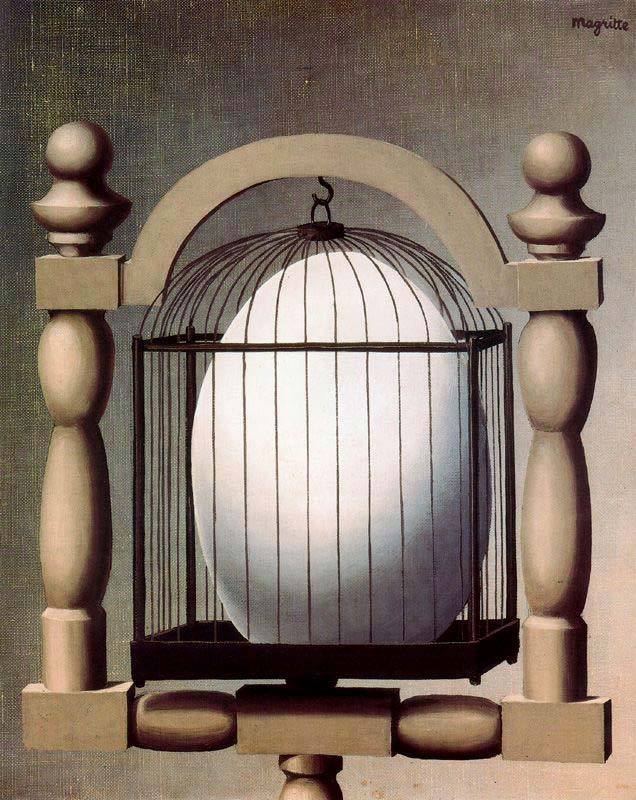| Elective Affinities | |
|---|---|
 |
|
| Artist | René Magritte |
| Year | 1933 |
| Medium | Oil on canvas |
| Location | Private collection |
| Dimensions | 16.1 in × 13 in |
| 41 cm × 33 cm | |
| René Magritte Famous Paintings | |
| The Son of Man, 1964 | |
| The Treachery of Images, 1928–29 | |
| The Human Condition, 1933 | |
| Golconda, 1953 | |
| The Listening Room, 1952 | |
| The False Mirror, 1928 | |
| Elective Affinities, 1933 | |
| The Mysteries of the Horizon, 1955 | |
| The Empty Mask, 1928 | |
| Complete Works |
Elective Affinities was an oil canvas painting created by René Magritte, a Belgian surrealist artist. This impressive artwork was based on Johann Goethe’s human chemical theory. The concept behind this theory is that external forces have a great impact on the will.
About the Painting
The painting depicts the fact that a person’s ideas are hatched into a concrete world that is enclosed by external forces. In terms of thermodynamics, this 1933 surrealistic painting depicts the relation of free will and the concept of chemical affinity. This theory was introduced by Johann von Goethe, a German polymath. Elective Affinities by René Magritte captured the essence of this theory, which explained the rationale behind free will. Although we may feel free, there are always instances or forces that we cannot control. Hence, human beings may feel as though they are caged because of their inability to take full control of the circumstances that occur in their life. These facts of life are encapsulated in this oil on canvas painting by Magritte.